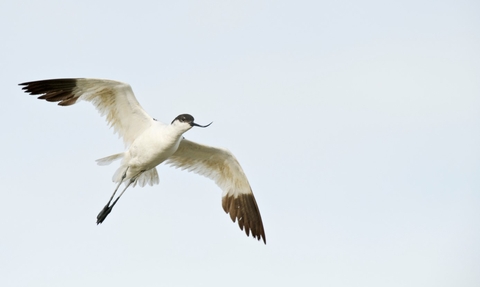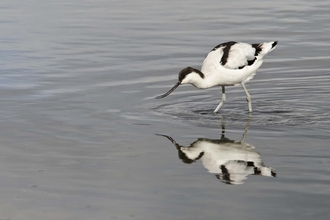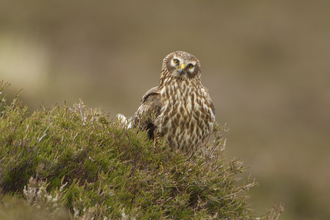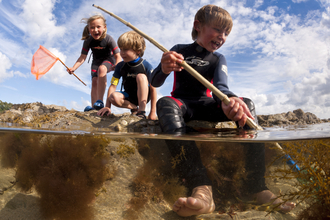
Terry Whittaker/2020VISION
Where to see avocets
The avocet
Once extinct from British shores, the avocet made a comeback thanks to the work of conservation bodies including The Wildlife Trusts, and surprisingly, the Second World War. Looking dapper in black and white with a neat black cap, the avocet can be spotted wading and sweeping their characteristically up-curved beaks back and forth to catch the small invertebrate life that makes up their diet.
Catch this symbol of bird conservation at the beginning of June to get the best chance of seeing newly hatched fluffy chicks.
Find avocets near you
Birds of shallow coastal lagoons, estuaries and increasingly inland wetlands, you can find these unmistakeable black and white waders at any of the Wildlife Trusts sites listed below, including the UK’s first successful inland breeding avocets in land-locked Worcestershire. Don't forget your binoculars!
- Cambridgeshire, Grafham Water
- Essex, Blue House Farm (where birds usually nest in front of one of the hides)
- Lancashire, Brockholes
- Lincolnshire, Far Ings, Gibraltar Point
- Norfolk, Cley Marshes, Hickling Broad, Holme Dunes
- Rutland, Rutland Water, Egleton Reserve
- Suffolk, Dingle Marshes
- Sussex, Rye Harbour
-
Worcestershire, Upton Warren (avocets have been breeding at the saline Flashes pools at The Christopher Cadbury Wetland Reserve each spring since 2003)
-
Yorkshire, Kilnsea Wetlands, North Cave Wetlands
What to look for
The avocet can be found wading and feeding in the shallows. Catch the elegant avocet at the beginning of June to see newly hatched chicks. Despite impressions of class and elegance, avocets display a feistier side during the nesting season, with adults shrieking and dive-bombing passing crows or harriers, or mobbing fellow wading oystercatchers and redshanks. Even shelduck families are driven off, adults and ducklings alike!
If you can't get to these places
If you can't get to any of these places, keep your eyes peeled between April and May during their migration period when they can turn up on gravel pits and wetlands anywhere.
More wildlife experiences
From seeing colourful wildflowers to spotting magnificent birds of prey, we can help you get closer to wildlife across the UK.







